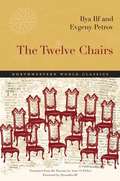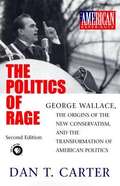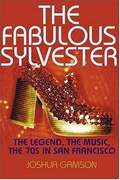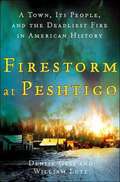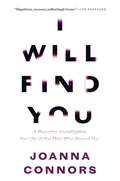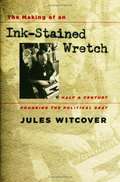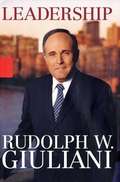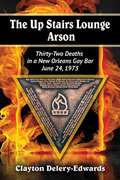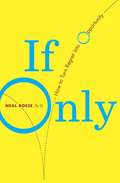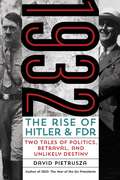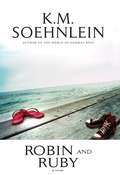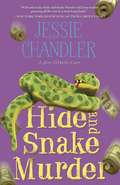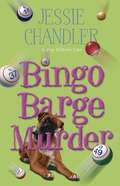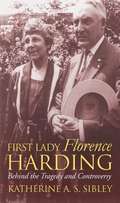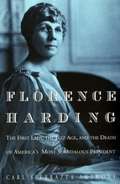- Table View
- List View
The Twelve Chairs (Northwestern World Classics)
by Evgeny Petrov Ilya Ilf Anne O. FisherWinner, 2012 Northern California Book Award for Fiction in Translation More faithful to the original text and its deeply resonant humor, this new translation of The Twelve Chairs brings Ilf and Petrov’s Russian classic fully to life. The novel’s iconic hero, Ostap Bender, an unemployed con artist living by his wits, joins forces with Ippolit Matveyevich Vorobyaninov, a former nobleman who has returned to his hometown to look for a cache of missing jewels hidden in chairs that have been appropriated by the Soviet authorities. The search for the chairs takes them from the provinces of Moscow to the wilds of the Transcaucasus mountains. On their quest they encounter a variety of characters, from opportunistic Soviet bureaucrats to aging survivors of the old propertied classes, each one more selfish, venal, and bungling than the last. A brilliant satire of the early years of the Soviet Union, as well as the inspiration for a Mel Brooks film, The Twelve Chairs retains its universal appeal.
The Politics of Rage: George Wallace, the Origins of the New Conservatism, and the Transformation of American Politics
by Dan T. CarterCombining biography with regional and national history, Dan T. Carter chronicles the dramatic rise and fall of George Wallace, a populist who abandoned his ideals to become a national symbol of racism, and later begged for forgiveness. In The Politics of Rage, Carter argues persuasively that the four-time Alabama governor and fourtime presidential candidate helped to establish the conservative political movement that put Ronald Reagan in the White House in 1980 and gave Newt Gingrich and the Republicans control of Congress in 1994. In this second edition, Carter updates Wallace's story with a look at the politician's death and the nation's reaction to it and gives a summary of his own sense of the legacy of "the most important loser in twentieth-century American politics."
The Pure Lover: A Memoir of Grief
by David PlanteA powerful and tragic memoir about the lifelong love between two men, from a well-loved and critically acclaimed author.
Mockingbird: A Portrait of Harper Lee
by Charles J. ShieldsTo Kill a Mockingbird--the twentieth century's most widely read American novel--has sold thirty million copies and still sells a million yearly. Yet despite her book's perennial popularity, its creator, Harper Lee, has become a somewhat mysterious figure. Now, after years of research, Charles J. Shields brings to life the warmhearted, high-spirited, and occasionally hardheaded woman who gave us two of American literature's most unforgettable characters--Atticus Finch and his daughter, Scout. At the center of Shields's evocative, lively book is the story of Lee's struggle to create her famous novel, but her colorful life contains many highlights--her girlhood as a tomboy in overalls in tiny Monroeville, Alabama; the murder trial that made her beloved father's reputation and inspired her great work; her journey to Kansas as Truman Capote's ally and research assistant to help report the story ofIn Cold Blood. Mockingbird--unique, highly entertaining, filled with humor and heart--is a wide-ranging, idiosyncratic portrait of a writer, her dream, and the place and people whom she made immortal.
The Fabulous Sylvester: The Legend, the Music, the Seventies in San Francisco
by Joshua GamsonA journey back through the music, madness, and unparalleled freedom of an era of change--the '70s--as told through the life of ultra-fabulous superstar Sylvester. Imagine a pied piper singing in a dazzling falsetto, wearing glittering sequins, and leading the young people of the nation to San Francisco and on to liberation where nothing was straight-laced or old-fashioned. And everyone, finally, was welcome to come as themselves. This is not a fairy tale. This was real, mighty real, and disco sensation Sylvester was the piper. Joshua Gamson--a Yale-trained pop culture expert--uses him, a boy who would be fabulous, to lead us through the story of the '70s when a new era of change liberated us from conformity and boredom. Gamson captures the exuberant life, feeling, energy, and fun of a generation's wonderful, magical waking up-from the parties to the dancing and music. The story begins with a little black boy who started with nothing but a really big voice. We follow him from the Gospel chorus to the glory days in the Castro where a generation shook off its shame as Sylvester sang and began his rise as part of a now-notorious theatrical troupe called the Cockettes. Celebrity, sociology, and music history mingle and merge around this endlessly entertaining story of a singer who embodied the freedom, spirit, and flamboyance of a golden moment in American culture.
Firestorm at Peshtigo: A Town, Its People, and the Deadliest Fire in American History
by Denise Gess William LutzA riveting account of a monster firestorm - the rarest kind of catastrophic fire - and the extraordinary people who survived its wrath. On October 8, 1871 - the same night as the Great Chicago Fire - an even deadlier conflagration was sweeping through the lumber town of Peshtigo, Wisconsin, 260 miles north of Chicago. The five-mile-wide wall of flames, borne on tornado-force winds of 100 miles per hour, tore across more than 2,400 square miles of land, obliterating Peshtigo in less than one hour and killing more than 2,000 people. Firestorm at Peshtigo places the reader at the center of the blow-out. Through accounts of newspaper publishers Luther Noyes and Franklin Tilton, lumber baron Isaac Stephenson, parish priest Father Peter Pernin, and meteorologist Increase Lapham - the only person who understood the unusual and dangerous nature of this fire - Denise Gess and William Lutz re-create the story of the people, the politics, and the place behind this monumental natural disaster, delivering it from the lost annals of American history. Drawn from survivors' letters, diaries, interviews, and local newspapers, Firestorm at Peshtigo tells the human story behind America's deadliest wildfire.
I Will Find You
by Joanna Connors"This is it. My rape. I knew it was coming. Every woman knows. And now here it is. My turn. " When Joanna Connors was thirty years old on assignment for the Cleveland Plain Dealer to review a play at a college theater, she was held at knife point and raped by a stranger who had grown up five miles away from her. Once her assailant was caught and sentenced, Joanna never spoke of the trauma again, until 21 years later when her daughter was about to go to college. She resolved then to tell her children about her own rape so they could learn and protect themselves, and she began to realize that the man who assaulted her was one of the formative people in her life. Setting out to uncover the story of her attacker, Connors embarked on a journey to find out who he was, where he came from, who his friends were and what his life was like. What she discovers stretches beyond one violent man's story and back into her own, interweaving a narrative about strength and survival with one about rape culture and violence in America. I Will Find You is a brave, timely consideration of race, class, education and the families that shape who we become, by a reporter and a survivor.
The Making of an Ink-stained Wretch: Half a Century Pounding the Political Beat
by Jules WitcoverThe jovial Witcover, one of the original "boys on the bus," traces his path across 56 years or political reporting and analysis. His insider memoir looks at the changing role and style of reporters, commentators, and other shapers of public opinion and gives a personal gloss to public events spanning administrations from Eisenhower to George W. Bush. Annotation ©2006 Book News, Inc., Portland, OR (booknews.com)
Leadership
by Ken Kurson Rudolph W. GiulianiHaving inherited a city ravaged by crime and crippled in its ability to serve its citizens, Giuliani shows how he found that every aspect of his career up to that point-from clerking for the formidable judge who demanded excellence (and rewarded it with a lifetime of loyalty) to busting organized crime during his years as a federal attorney -shaped his thinking about leadership and prepared him for the daunting challenges ahead. Giuliani's successes in turn strengthened his conviction about the core qualities required to be an effective leader, no matter what the size of the organization, be it an international corporation or a baseball team. In detailing his principles of leadership, Giuliani tells captivating stories that are personal as well as prescriptive.
The Up Stairs Lounge Arson: Thirty-two Deaths in a New Orleans Gay Bar, June 24, 1973
by Clayton Delery-EdwardsOn June 24, 1973, a fire in a New Orleans gay bar killed 32 people. This still stands as the deadliest fire in the city's history. Though arson was suspected, and though the police identified a likely culprit, no arrest was ever made. Additionally, government and religious leaders who normally would have provided moral leadership at a time of crisis were either silent or were openly disdainful of the dead, most of whom were gay men. Based upon review of hundreds of primary and secondary sources, including contemporary news accounts, interviews with former patrons of the lounge, and the extensive documentary trail left behind by the criminal investigations, The Up Stairs Lounge Arson tells the story of who frequented this bar, what happened on the day of the fire, what course the investigations took, why an arrest was never made, and what the lasting effects of the fire have been.
If Only: How to Turn Regret into Opportunity
by Neal J. RoeseIf you spend a lot of time thinking about "what might have been," you're not alone. In If Only, Neal Roese, Ph.D., one of the world's top scientists studying regret, shows us that thoughts about what might have been are practically unavoidable. In fact, they are produced spontaneously by the brain with a very practical goal--to guide us toward improvement. But the same thoughts can bring the pain of regret. Is it worth the pain to get the improvement? Or should you live life with no regrets? Luckily, it's not a package deal. The surprising message of If Only is that we can manage our regret style to maximize the gain and minimize the pain. In an entertaining and upbeat book that weds lively science writing to practical self-help, Dr. Roese mines the research and shares simple strategies for managing your life to make the most of regret. You'll learn: *Don't Over-react.You may react to a regrettable situation by taking many fewer chances. Don't. This only ensures that you will miss out on new opportunities. *Think Downward. Consider the downward alternatives. How could a bad situation have gone even worse? This makes you feel appreciative of what you have. *Do It. If you decide to do something and it turns out badly, research shows that it probably won't haunt you down the road. (You'll reframe the failure and move on.) But you will regret the things left undone. *Regrets are Opportunities Knocking. Our brains produce the most "if only" thoughts about things in our lives that we can still change. So consider regret as a signal flashing: It's not too late! If Only also shows that "if only" thinking plays a huge role across our lives, from how best to buy, to why we enjoy movies, how juries decide, and the way we choose someone to love. If Only opens a new window into the way our minds work and offers clear lessons for living more happily with the past. "Fifteen years of research have been combined into a list of the top four biggest regrets of the average American: * not getting more education * career regrets * regrets in love * not spending enough time with kids The list is essentially a summary of the biggest traps, pitfalls, and mistakes into which people like you might blunder. Look over the list and try to identify areas of your life that represent the greatest vulnerability to future regret. And act now to avoid regret later." --from If Only.
1932: The Rise of Hitler and FDR--Two Tales of Politics, Betrayal, and Unlikely Destiny
by David PietruszaTwo Depression-battered nations confronted destiny in 1932, going to the polls in their own way to anoint new leaders, to rescue their people from starvation and hopelessness. America would elect a Congress and a president ebullient aristocrat Franklin Roosevelt or tarnished Wonder Boy Herbert Hoover. Decadent, divided Weimar Germany faced two rounds of bloody Reichstag elections and two presidential contests doddering reactionary Paul von Hindenburg against rising radical hate-monger Adolf Hitler. The outcome seemed foreordained unstoppable forces advancing upon crumbled, disoriented societies. A merciless Great Depression brought greater perhaps hopeful, perhaps deadly transformation: FDR s New Deal and Hitler s Third Reich. But neither outcome was inevitable. Readers enter the fray through David Pietrusza s page-turning account: Roosevelt s fellow Democrats may yet halt him at a deadlocked convention. 1928 s Democratic nominee, Al Smith, harbors a grudge against his one-time protege. Press baron William Randolph Hearst lays his own plans to block Roosevelt s ascent to the White House. FDR s politically-inspired juggling of a New York City scandal threatens his juggernaut. In Germany, the Nazis surge at the polls but twice fall short of Reichstag majorities. Hitler, tasting power after a lifetime of failure and obscurity, falls to Hindenburg for the presidency also twice within the year. Cabals and counter-cabals plot. Secrets of love and suicide haunt Hitler. Yet guile and ambition may yet still prevail. 1932 s breathtaking narrative covers two epic stories that possess haunting parallels to today s crisis-filled vortex. It is an all-too-human tale of scapegoats and panaceas, class warfare and racial politics, of a seemingly bottomless depression, of massive unemployment and hardship, of unprecedented public works/infrastructure programs, of business stimulus programs and damaging allegations of political cronyism, of waves of bank failures and of mortgages foreclosed, of Washington bonus marches and Berlin street fights, of once-solid financial empires collapsing seemingly overnight, of rapidly shifting social mores, and of mountains of irresponsible international debt threatening to crash not just mere nations but the entire global economy. It is the tale of spell-binding leaders versus bland businessmen and out-of-touch upper-class elites and of two nations inching to safety but lurching toward disaster. It is 1932 s nightmare with lessons for today. "
Robin and Ruby
by K. M. SoehnleinIn his award-winning bestseller The World of Normal Boys, K.M. Soehnlein introduced readers to the richly compelling voice of teenager Robin MacKenzie. In Robin and Ruby, he revisits Robin and his younger sister, masterfully depicting the turbulence of the mid-1980s--and that fleeting time between youth and adulthood, when everything we will become can be shaped by one unforgettable weekend. At twenty-years-old, Robin MacKenzie is waiting for his life to start. Waiting until his summer working at a Philly restaurant is over and he's back with his boyfriend Peter. . . until the spring semester when he'll travel to London for an acting program. . . until the moment when the confidence he fakes starts to feel real. Then, one hot June weekend, Robin gets dumped by his boyfriend and quickly hits the road with his best friend George to find his teenaged sister, Ruby, who's vanished from a party at the Jersey Shore. For years, his friendship with George has been the most solid thing in Robin's life. But lately there are glimpses of another George, someone Robin barely knows and can no longer take for granted. Ruby is on an adventure of her own, dressing in black, declaring herself an atheist, pulling away from the boyfriend she doesn't love--not the way she loves the bands whose fractured songs are the soundtrack to her life. Then a chance encounter puts Ruby in pursuit of a seductive but troubled boy who might be the key to her happiness, or a disaster waiting to happen. As their paths converge, Robin and Ruby confront the sadness of their shared past and rebuild the bonds that still run deep. In prose that is lyrical, compulsively readable, and exquisitely honest, K.M. Soehnlein brilliantly captures a family redefining itself and explores those moments common to us all--when freedom bumps up against responsibility, when sex blurs the line between friendship and love, and when what you stand for becomes more important than who you were raised to be.
Louise Brooks
by Barry ParisLouise Brooks left Wichita, Kansas, for New York City at age fifteen and lived the kind of life of which legends are made. From her beginnings as a dancer to her years in Hollywood, Berlin, and beyond, she was hailed and reviled as a new type of woman: independent, intellectually daring, and sexually free. In this widely acclaimed, first and only comprehensive biography, Barry Paris traces Brooks's trajectory from her childhood through her fall into obscurity and subsequent "resurrection" as a brilliant writer and enduring film icon.
Hide and Snake Murder (Shay O'Hanlon #2)
by Jessie ChandlerBook two in the riotous caper series starring Shay O'Hanlon and her trouble-prone pals. When Shay O'Hanlon's ill-mannered friend Baz steals a stuffed snake from a wealthy businessman, he wasn't expecting it to be filled with money. Nor was he expecting his aunt Agnes to take it with her on vacation to the Big Easy. With trigger-happy thugs in hot pursuit, Shay leads her friends on a rowdy rescue mission from Minneapolis to New Orleans and back. Along the way, a bungled burglary puts the gang in a drug cartel's cross hairs, and a beautiful professor offers the only way out. But can Shay and the gang trust her with their lives?
Bingo Barge Murder (Shay O'Hanlon Caper #1)
by Jessie ChandlerAs co-owner of The Rabbit Hole, a quirky-cool Minneapolis coffee shop, Shay O'Hanlon finds life highly caffeinated but far from dangerous. That is, until her lifelong friend Coop becomes a murder suspect. The victim was Kinky, Coop's former boss and the unsavory owner of The Bingo Barge, a sleazy gambling boat on the Mississippi. The weapon? Kinky's lucky bronzed bingo marker. While unearthing clues to absolve Coop, Shay encounters Mafia goons hunting for some extremely valuable nuts. Looking for the murderer without help from the cops proves risky-especially with distracting sparks flying between Shay and the beautiful yet fierce Detective Bordeaux. When Shay's elderly friend and landlady is held for ransom by the mob, all bets are off. Can Shay find the killer before the stakes get any higher?
Not a Passing Phase: Reclaiming Lesbians in History, 1840-1985
by Lesbian History GroupA collection of essays and articles about "romantic friendships" between famous women of the past.
First Lady Florence Harding: Behind the Tragedy and Controversy
by Katherine A. S. SibleyFlorence Kling Harding has come down through history as one of our most scorned first ladies. Victimized by caricatures and branded a shrew, she stands at the bottom of historians' polls, her reputation tarnished by her husband's scandals despite their joint popularity while in office. These depictions, argues Katherine Sibley, have prevented us today from seeing how innovative a first lady Florence Harding really was. This new look at Mrs. Harding restores humanity to an oft-maligned figure by examining her progressive causes, her celebrity, and her role in her husband's work. For if Eleanor Roosevelt is credited with shattering the first lady's ceremonial mold, it was Florence Harding who made the first cracks. Sibley's is the first book to offer a full treatment of Florence as first lady rather than as mere supporting actress in the Harding administration. Never shying from publicity, she made herself more available to the press than did her predecessors and opened the White House up to the public. And she took such a pioneering role in Warren Harding's campaign and presidency that many thought she outdid her husband as a politician. Turning to primary sources that others have overlooked, Sibley challenges the clichés about Florence's time in the national spotlight. She describes how Mrs. Harding supported racial equality, lobbied for better treatment for veterans and female prisoners, and maintained a lifelong interest in preventing animal cruelty. As adviser to her husband, she assisted with his speechwriting and consulted with the cabinet; she was also the first first lady to deliver spontaneous speeches while traveling with the president. At a personal level, Sibley examines in detail how Mrs. Harding responded to her husband's death, assessing why this tragedy struck Americans with such force even as national empathy proved so fleeting. She also offers a more nuanced description of the president's philandering, viewing Nan Britton's claims with skepticism while noting the effects on Florence of his dalliance with Carrie Phillips. Florence Harding bequeathed an activist legacy, and it is due to her example that aspiring presidential wives are expected to campaign with their husbands and be accessible to public and press. Florence Harding truly set the stage for those to follow; this book delivers the full and fair portrait that has long been her due.
Second-Wave Millennials: Tapping the Potential of America's Youth
by Warren WrightAuthor Warren Wright takes you on an engaging journey through the generations in the workplace, starting with “Dave” the Boomer, and ending with the newest kid on the block—“Samanthe”, a Second-Wave Millennial. Page-turning narrative peppered with practical solutions tells the compelling story of how different generations can get along in the workplace—with an emphasis on tapping the potential of the newest generation—Second-Wave Millennials. Second-Wave Millennials reveals: 5 ways to craft an ideal workplace for all generations 4 lifestyle themes that make up Millennials’ identity The top soft skills required for the newly-hired Second-WaveMillennials
Three Knocks on the Wall
by Evelyn Sibley LampmanMarty had just finished burying a dead robin in her pet cemetery near the tall wooden wall that surrounded the Hutchinson yard and house next door. Suddenly she heard it--knock, knock, knock --three knocks coming from the other side of the wall. For a moment Marty was too petrified to move. Knocking on a wall was something a crazy person might do and some people said old Mrs. Hutchinson was crazy, living alone with an unmarried daughter and seeing no one. Then the knocks came again. Marty soon learned the identity of the person on the other side of the ten-foot wall, and why she stayed there. What was harder to discover was a way to help her new invisible friend. For a long time, all Marty could do was to communicate through the wall and be patient. It was not until a deadly flu epidemic gripped the town and Marty could not come to the wall that her friend finally dared to step outside it. Evoking small town life in Oregon during World War I with vividness and a clear sense of time and character, Evelyn Sibley Lampman has created a very human and dramatic story that will carry its readers along to a most satisfying conclusion.
Step on a Crack
by Mary AndersonSarah suffers from frightening nightmares and compulsive stealing. A friend helps explore the dark areas of her mind, exposing some disturbing facts.
The Pencil Families
by Susan TerrisAfter she discovers a dead body floating in the lagoon, ten-year-old Emily's life becomes even more exciting than the fantasies she creates for her "pencil families."
The Dialectic Of Sex: The Case For Feminist Revolution
by Shulamith FirestoneA best-seller upon its original publication in 1970--when Shulamith Firestone was just twenty-five years old--The Dialectic of Sex was the first book of the women's liberation movement to put forth a feminist theory of politics. Beginning with a look at the radical grassroots history of the first wave of feminism and its foundation in the abolition movement, Firestone documents its major victory, the granting of the vote to women in 1920, and the fifty-year backlash that followed. Deftly synthesizing the work of Freud, Marx, de Beauvoir, and Engels, Firestone creates a powerful argument for feminist revolution in which she asserts that women must seize the means of reproduction. For as long as women (and only women) are required to bear and rear children, they will lack the biological and attendant economic independence required to be completely liberated. Ultimately, she presents feminism as the key radical ideology, the missing link between Marx and Freud, uniting their visions of the political and the personal. As revelatory and urgent as it was upon its first publication, The Dialectic of Sex is a testament to Shulamith Firestone's startlingly prescient vision. It remains required reading for anyone concerned about the history of feminism as well as the ongoing hurdles faced by women to this day in regard to motherhood, child care, and career.
Election Journal: The Political Events of 1987-1988
by Elizabeth DrewThe Presidential election of 1988 changed Presidential politics, in ways that will be with us for a long time. New techniques, ans a new tone, were employed, and since they were successful, they are likely to be emulated throughout our political system.
Florence Harding: The First Lady, the Jazz Age and the Death of America's Most Scandalous President
by Carl Sferrazza AnthonyTells the story of Florence Harding's rise from young unwed mother to First Lady and reveals her influence behind Harding's ascent to America's most scandal-ridden presidency and her role in his death. The drama of her life is set against the stage of the White House in the Jazz Age, and involves exciting elements such as mistresses, blackmail, poisoning, and opium addicts.
